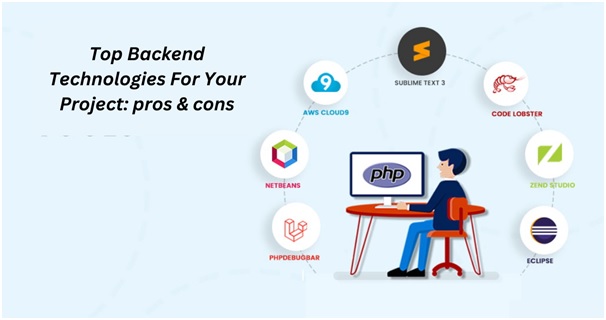In today’s highly competitive business environment, technology plays a crucial role in determining the success or failure of any project. Backend technologies are the foundation of any web application, and choosing the right one is critical for the success of your project. In this blog post, we will explore the top backend technologies for your project and their pros and cons.
1. Node.js
Node.js is a popular backend technology that is built on the V8 engine of Google’s Chrome browser. It is a JavaScript runtime environment that enables developers to build fast and scalable applications. One of the major advantages of Node.js is its ability to handle a large number of concurrent requests, making it an ideal choice for real-time applications. Additionally, Node.js has a large community of developers who constantly contribute to its development.
Pros:
- It allows developers to write server-side applications in JavaScript.
- It is highly scalable and can handle a large number of concurrent requests.
- It has a large community of developers and a vast ecosystem of tools and libraries.
Cons:
- Asynchronous programming can be complex and difficult to debug.
- It is not suitable for CPU-intensive tasks.
- Ruby on Rails
2. Ruby on Rail
Ruby on Rails is a popular backend technology that is known for its simplicity and elegance. It is a full-stack framework that includes everything needed to build a web application. Ruby on Rails is designed to make developers more productive by providing them with a convention-over-configuration approach. Additionally, it has a strong community of developers who contribute to its development.
Pros:
• It has a convention-over-configuration approach that makes development faster and more efficient.
• It is highly scalable and can handle a large number of concurrent requests.
• It has a strong community of developers and a vast ecosystem of tools and libraries.
Cons:
• It may not be suitable for CPU-intensive tasks.
• It may have a slower performance compared to other backend technologies.
3. Django
Django is a popular Python-based backend technology that is known for its simplicity and flexibility. It is a full-stack framework that includes everything needed to build a web application. Django follows the Model-View-Controller (MVC) architectural pattern, which separates the application’s data, user interface, and control logic. Additionally, it has a large community of developers who contribute to its development.
Pros:
• It has a highly modular architecture that allows developers to build complex applications easily.
• It is highly scalable and can handle a large number of concurrent requests.
• It has a large community of developers and a vast ecosystem of tools and libraries.
Cons:
• It may not be suitable for CPU-intensive tasks.
• It may have a slower performance compared to other backend technologies.
4. Laravel
Laravel is a popular PHP-based backend technology that is known for its simplicity and elegance. It is a full-stack framework that includes everything needed to build a web application. Laravel follows the Model-View-Controller (MVC) architectural pattern, which separates the application’s data, user interface, and control logic. Additionally, it has a strong community of developers who contribute to its development. Thus, the future of PHP development is bright & looked upon by every technician in the coming years.
Pros:
- It has a simple and elegant syntax that makes development faster and more efficient.
- It is highly scalable and can handle a large number of concurrent requests.
- It has a strong community of developers and a vast ecosystem of tools and libraries.
Cons:
- It may not be suitable for CPU-intensive tasks.
- It may have a slower performance compared to other backend technologies.
- You need to evaluate them based on your project’s requirements. If you need a highly scalable technology that can handle a large number
Why backend is popular in web development?
Backend web development is one of the most popular aspects of web development. It is the foundation for any website or application and it is responsible for taking care of all the behind-the-scenes work. With backend web development, developers can create dynamic websites that are interactive and engaging. It allows developers to create powerful databases that store data, handle user requests and generate content.
Backend development is popular because it provides a great deal of flexibility when it comes to creating websites and applications. Developers can use different programming languages and frameworks to build their projects, making them more efficient and easier to maintain. Additionally, backend technologies like APIs allow developers to quickly integrate different services into their projects without having to write code from scratch. This makes it easier for developers to add features without sacrificing performance or scalability.
Conclusion
In conclusion, choosing the right backend technology for your project is crucial for its success. Among the top backend technologies in 2023 are Node.js, Python, and Ruby on Rails, each with its own set of pros and cons. Node.js offers high performance and scalability but requires proficient JavaScript skills. Python is widely popular and easy to learn but may have limitations in scalability. Ruby on Rails is user-friendly and has a large community but can be slower in performance. Careful consideration of your project’s needs is necessary to make the best choice.













